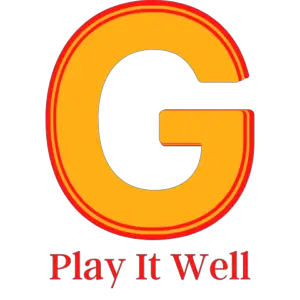In the world of poker, there is a long-standing tradition of poker dealers tapping the table. This seemingly simple action holds significant meaning and serves various purposes in the game. It is important to understand why poker dealers tap the table in order to fully grasp the intricacies of poker traditions and customs.
The tapping of the table by a poker dealer is often done to acknowledge a winning hand or to signal the end of a betting round. It can also serve as a way to bring attention to the community cards on the table. Additionally, poker dealers may tap the table to maintain rhythm and flow during the game. The act of table tapping has become deeply ingrained in poker culture and is considered an important part of poker etiquette.
Key Takeaways:
- Poker dealers tap the table to acknowledge a winning hand or signal the end of a betting round.
- Table tapping brings attention to the community cards on the table.
- Poker dealers tap the table to maintain rhythm and flow during the game.
- Table tapping is an important part of poker etiquette.
- The act of table tapping has become deeply ingrained in poker culture.
The Importance of Observation in Poker
In the game of poker, observation plays a vital role in determining the outcome of each hand. The ability to keenly observe opponents and interpret their actions is a skill that sets successful players apart from the rest. By paying close attention to the subtle movements, glances, and twitches of their opponents, players can gather valuable information about their hand strength, strategies, and intentions.
Observation goes beyond mere watching; it involves a deep analysis of non-verbal communication, commonly referred to as “poker tells.” These tells can be observed in body language, facial expressions, and other physical cues exhibited by players during the game. Each player has their own unique set of tells, and deciphering these cues can give valuable insights into their decision-making processes and overall gameplay.
Understanding common poker tells is essential in poker. The way an opponent glances at their chips, leans forward in their seat, becomes animated or quiet can provide clues about their hand strength and potential strategies. By incorporating the knowledge of common tells into their strategy and considering other factors such as betting patterns and previous observations, players can gain a significant advantage over their opponents.
Observation and non-verbal communication:
- Observation is a crucial skill that allows players to tap into a hidden realm of communication beneath words.
- Non-verbal cues can reveal opponents’ thoughts, intentions, and confidence levels.
- Understanding opponents’ body language and facial expressions helps make accurate assessments of their hand strengths.
- Interpreting non-verbal cues should be balanced with other factors to avoid relying solely on them.
By honing their observation skills and staying attuned to the non-verbal cues of their opponents, players can gain a significant edge in the game of poker.
Understanding Body Language and Facial Expressions
Body language and facial expressions are powerful forms of non-verbal communication that can provide valuable insights into a person’s thoughts and intentions. In the context of poker, where players strive to read their opponents and make informed decisions, understanding these cues becomes even more critical. By observing subtle nuances and analyzing the messages conveyed through body language and facial expressions, players can gain a significant advantage at the poker table.
When it comes to body language, certain postures, gestures, and movements can reveal a player’s level of confidence or nervousness. A relaxed and open body posture might indicate a strong hand, while fidgeting or closed-off postures could suggest a weaker hand or anxiety. Similarly, facial expressions can provide vital clues about an opponent’s emotional state. A sudden smile might be a sign of confidence, while a furrowed brow could indicate uncertainty or frustration.
Poker tells, which are specific unconscious behaviors or patterns exhibited by players, can also be deciphered through body language and facial expressions. These tells vary from person to person but can offer critical insight into an opponent’s hand or strategy. For example, a player who consistently taps their fingers when holding a strong hand may inadvertently reveal their intentions. Recognizing and interpreting these tells can help players make more accurate assessments and adjust their own strategies accordingly.
Poker Tells: A Powerful Weapon
Recognizing common poker tells is an essential skill that can give players a significant edge in the game. Some common tells include changes in breathing patterns, hesitation before betting, or a slight change in voice tone. While these cues should not be solely relied upon, integrating them into overall strategy along with other factors like betting patterns and previous observations can lead to more informed decisions.
Understanding body language and facial expressions in poker is like having access to a secret language. It allows players to glimpse into their opponents’ minds and gain a deeper understanding of their strategies. By honing the ability to interpret these non-verbal cues, players can become more intuitive and make smarter moves at the poker table.
Interpreting Non-Verbal Cues: The Key to Success
Interpreting non-verbal cues in poker requires a combination of keen observation and psychological insight. It involves analyzing a player’s movements, gestures, facial expressions, and overall demeanor to decipher their thoughts and intentions. The key is to look for patterns and consistency in their non-verbal behavior, as this can provide valuable information about their hand strength or potential bluffing attempts.
However, it is important to remember that non-verbal cues should not be viewed in isolation. They should be considered alongside other factors, such as the context of the game, the player’s betting patterns, and their overall style of play. By blending these observations together, players can form a more comprehensive picture and make better-informed decisions.
Mastering the art of understanding body language and facial expressions is an ongoing process that requires practice and attentiveness. It is a skill that can significantly enhance a player’s ability to read opponents, make accurate assessments, and ultimately increase their chances of success at the poker table.
The Importance of Recognizing Common Poker Tells
In the high-stakes game of poker, being able to recognize common poker tells can give you a significant advantage over your opponents. These tells, which are involuntary behaviors displayed by players, can provide valuable insights into their hand strengths, decision-making processes, and potential strategies. By paying close attention to these cues, you can make more accurate assessments and adjust your own strategies accordingly.
One common poker tell is a sudden change in behavior or body language. For example, if a player suddenly becomes more animated or talkative, it could indicate that they have a strong hand and are trying to appear confident. On the other hand, if a player becomes more still or quiet, it might suggest that they are bluffing or have a weaker hand.
Another tell to watch out for is how players handle their chips or cards. If a player glances at their chips after seeing their cards, it could indicate that they have a strong hand and are contemplating a big bet. Similarly, if a player looks at their chips after seeing the community cards, it could suggest that they have a draw or a potential winning hand.
Examples of common poker tells:
- Glancing at chips or cards
- Leaning forward in the seat
- Becoming more animated or talkative
- Suddenly becoming more still or quiet
Remember, it’s important to note that poker tells should not be solely relied upon, as they can vary from player to player and be easily manipulated. It’s essential to consider other factors such as betting patterns, previous observations, and overall strategy when interpreting these tells. By incorporating the knowledge of common poker tells into your gameplay, you can gain a valuable edge and increase your chances of success at the poker table.

Interpreting Non-Verbal Cues
When playing poker, mastering the art of interpreting non-verbal cues can be the key to unraveling opponents’ hands and intentions. These subtle gestures and movements can reveal a wealth of information, providing valuable insights into their strategies and potential hand strengths.
In the world of poker tells, body language plays a significant role. Observing opponents’ facial expressions, body postures, and hand movements can offer clues about their level of confidence, bluffing tendencies, or excitement over a strong hand. Paying attention to patterns in their behavior, such as nervous tics or relaxed postures, can help you anticipate their next move.
It’s important to note that while non-verbal cues can be insightful, they shouldn’t be the sole basis for your decisions. Instead, consider them alongside other factors like betting patterns and previous observations. By incorporating non-verbal cues into your overall strategy, you’ll be able to read opponents more accurately, adjust your own gameplay, and increase your chances of success.
In the game of poker, interpreting non-verbal cues is a valuable skill that can give you a significant edge. So, the next time you’re at the poker table, keep a close eye on your opponents’ gestures and expressions. You never know what valuable information they might be unintentionally giving away.
FAQ
Why do poker dealers tap the table?
Poker dealers tap the table to acknowledge a winning hand, signal the end of a betting round, bring attention to the community cards, and maintain rhythm and flow during the game. It is a tradition and part of poker etiquette.
How important is observation in poker?
Observation is crucial in poker as it allows players to gather valuable information about their opponents’ hand strength and strategies. It involves interpreting facial expressions, body language, and other non-verbal cues, giving players an edge in decision-making.
What role do body language and facial expressions play in poker?
Body language and facial expressions in poker can reveal opponents’ thoughts and intentions. By observing subtle cues, players can gain insights into opponents’ confidence levels, bluffing tendencies, and excitement over strong hands, helping them make better-informed decisions.
How can recognizing common poker tells benefit players?
Recognizing common poker tells, such as glancing at chips or cards, leaning forward, becoming more animated or talkative, or suddenly becoming still or quiet, can provide insights into opponents’ hand strengths and decision-making processes. By considering these tells alongside other factors, players can improve their chances of success.
How can interpreting non-verbal cues help in poker?
Interpreting non-verbal cues in poker, including opponents’ subtle movements, expressions, and gestures, can help players read opponents’ hands and intentions. By analyzing facial expressions, body postures, and hand movements, players can gain valuable insights into opponents’ strategies, giving them an advantage in the game.
Source Links
- https://www.justpokertables.com/blogs/news/reading-your-opponents-mastering-poker-tells-and-non-verbal-cues-for-a-winning-edge
- https://www.beckleyboutique.com/unveiling-the-mystery-why-do-pro-poker-players-wear-scarves/
- https://www.justpokertables.com/blogs/news/reading-poker-faces-understanding-tells-and-body-language
